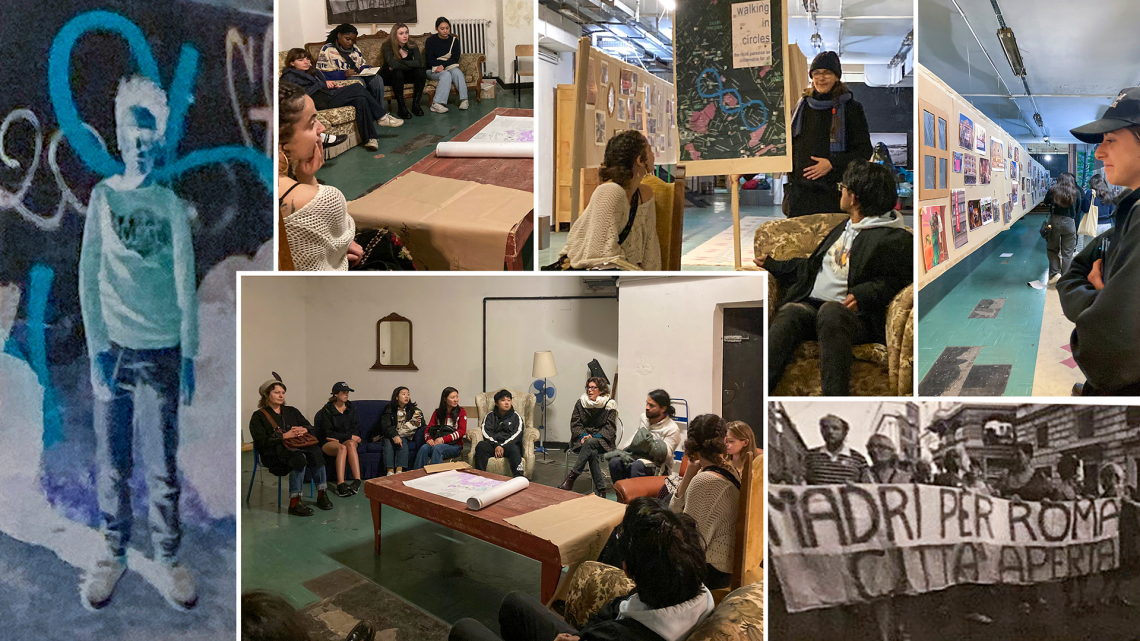
Students visit MAd'O (Museum of the Act of Hospitality), located inside the 26-year-old Roman squat Spin Time Labs, which hosts the work of resident artists.
News directly from Cornell's colleges and centers
More than a postcard experience: Rome at the margins
By Molly Sheridan
Rome is often synonymous with the century-spanning cultural history showcased throughout its urban core. To more fully understand the city, however, it is necessary to move well beyond the tourist gloss. Students enrolled in Visiting Lecturer Carolina Ciampaglia's Italian Cinema course and Visiting Critic Anna Gorchakovskaya's Contemporary Rome Seminar embarked on this journey together, delving into life at the margins of Rome, both geographically and symbolically.
This marked the second time Ciampaglia and Gorchakovskaya collaborated to create cross-over activities between their classes in order to expand on the topics at hand. To deepen their understanding of politically and socially engaged contemporary art and culture in Rome, the students ventured out with Gorchakovskaya to where artists can best afford to live and work. All of the most interesting experimental projects are somehow connected with the periphery of the city, Gorchakovskaya finds. "We talk a lot about how the margin can be a truly revolutionary space," she explains. "It's also a space of possibility and a radical resistance. And then when we look at the history of cinema, we realize that it's not a new idea."
Ciampaglia curates the films she presents each semester based on the locations the students will experience first-hand, offering alternative points of view. This semester's films include titles such as Ladri di Biciclette / Bicycle Thieves (Vittorio DeSica, 1948), La Dolce Vita (Federico Fellini, 1959), Accattone (Pier Paolo Pasolini, 1960), Non essere cattivo / Don't be bad (Claudio Caligari, 2015), and La terra dell'abbastanza / Boys Cry (Fabio e Damiano D'Innocenzo, 2018).
"The Rome that we have been studying through the movies is a Rome that has been under the eyes of the filmmakers since the 1960s," Ciampaglia says, noting the dramatic transformation that occurred during the post-war reconstruction and economic boom. "Pasolini was the first to point out how the identity of Italians was changing because of the transformation of Italy from a rural, agricultural country into an industrialized, consumeristic one. Rome became symbolic or in any case useful to represent this transformation and to show how those who were suffering were poor, marginalized people, and it was among them that often the eye of the camera of these filmmakers focused."
Continue reading on the Architecture, Art, and Planning website.
Media Contact
Get Cornell news delivered right to your inbox.
Subscribe
